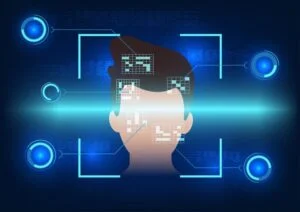The world of cybercrimes is evolving every day with enhanced technological adaptation. Deepfake Technology are one of the recent practices of cybercrimes, where wrongdoers create morphed images, voice notes, and videos of people to trap them. It has impacted individuals as well as organizations negatively.
Deepfake technology is spreading fast, increasing the concerns of privacy breaches, cyber threats, and illegal data access. Criminals usually ask for vast amounts of money or valuable data from the victims in return for these fake files.
With AI integration, these methods have progressed further. Now, creating deepfakes is very easy, and anyone can formulate fake images and videos with the help of specific tools or platforms. This blog is a complete deepfake technology guide highlighting how it works and how to identify deepfakes.
What are deepfakes?
Deepfakes are fake and morphed images and videos that offenders create with computers and circulate on the web. The motive of such activity is to manipulate facts and defamation. People around the world install and use deepfake tools and software without an awareness of how dangerous it can be.
Social media is full of misinformation and misleading details. People knowingly or unknowingly use deepfake technology to morph their and others’ pictures and videos to have fun by uploading them on social platforms. However, this can lead to major privacy breaches, misleading social media users.
Actors, sports personalities, business tycoons, politicians, and larger organizations are the easy targets of deepfake creators. Celebrities often fall prey to such scams due to their expanded networks.
How does deepfake technology work?
Machine learning (ML) and Artificial Intelligence (AI) are the key mechanisms to create deepfakes. Developers design applications and tools integrating ML and AI to edit pictures and videos with artificial elements. Primarily, deepfake technology was the source of adult content creation. Nevertheless, the techniques evolved and became popular methods for threatening people’s identities on virtual platforms.
Deepfake algorithms are complex to understand. However, in a simple way, it profoundly analyzes a file, be it audio, photo, or video, and maps each attribute to replicate them with fake elements. It uses neural networks to assess facial characteristics, gestures, and specific patterns in provided files. Such mechanisms can read and analyze vast data sets in no time, replicating them with fake data.
In pictures, deepfake technology swaps the faces of the subjects with artificial and fake colorings. In videos, it can mimic the actions of the subject, loading it with morphed elements. Deepfakes can also mimic the actual voice of a subject to spread misinformation. Listeners and viewers can track these forged multimedia files with only appropriate understanding.
Deepfakes are all fine for entertainment and ignorable purposes. However, people may have ill intent to mislead the public and fraud. On such grounds, it can be hazardous. The outcomes may even lead to identity theft and privacy violations.
Methods to identify deepfakes:
Awareness:
The key to identifying deepfakes is awareness. The general public ends up using deepfake tools without a proper idea of how devastating it can be. They do it for fun, unaware of the fact that they are violating someone’s privacy. Additionally, forged videos and pictures can easily manipulate most people online. The reason for this is technological unawareness.
Therefore, awareness drives are a must to limit the usage of such techniques. Governments of different countries and major tech firms are taking the initiative to spread knowledge on the same.
Technological Knowledge:
Additionally, a solid technological command can also be beneficial in identifying deepfakes. People with appropriate exposure to the tech spectrum can easily trace fake and forged images and videos. Moreover, there are several AI tools and platforms to detect deepfake technology. Hence, people with tech awareness can also use these tools to identify deepfakes.
Wrapping up on deepfake technology!
Deepfakes, among other cyber threats, have become a significant concern in the digital era. With AI implementation, it has become difficult to track the unauthenticity of a multimedia file on the internet. However, it is high time to consider the urgency of restricting deepfake technology while aiming for a digital era devoid of cybercrimes. Stay current with the ongoing tech trends with our blogs.
You may also like:
Understanding the Evolution and Impact of Deepfake Technology






